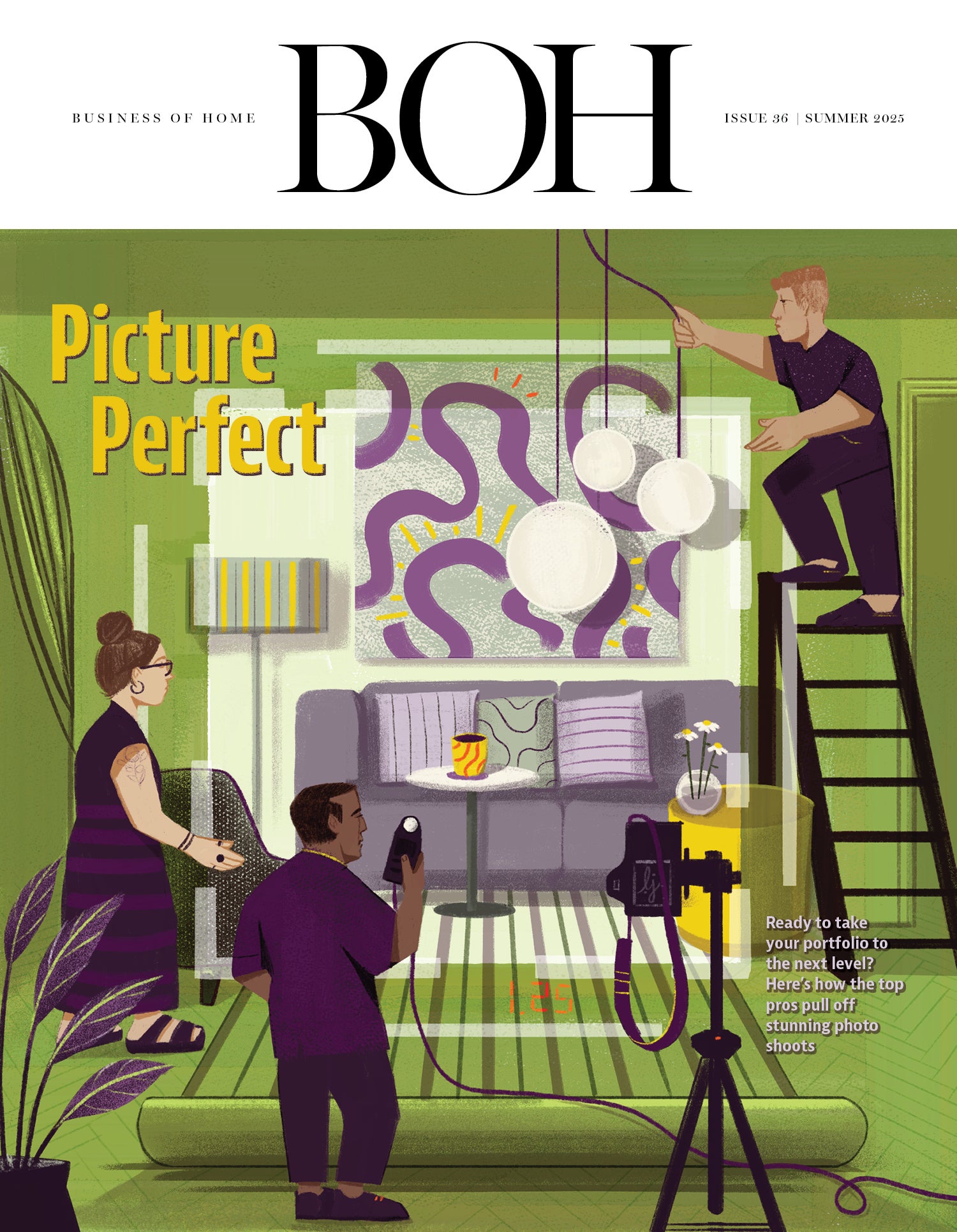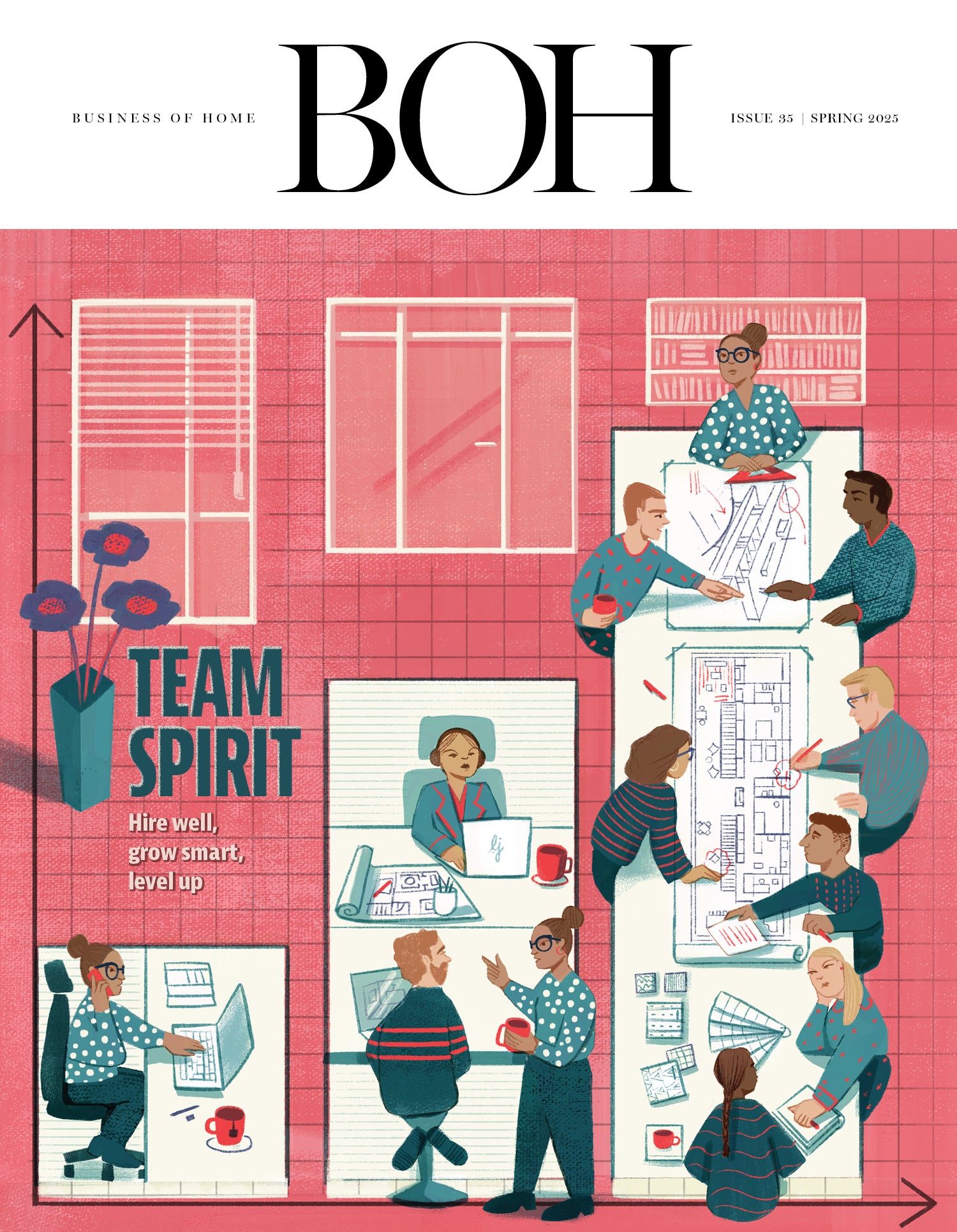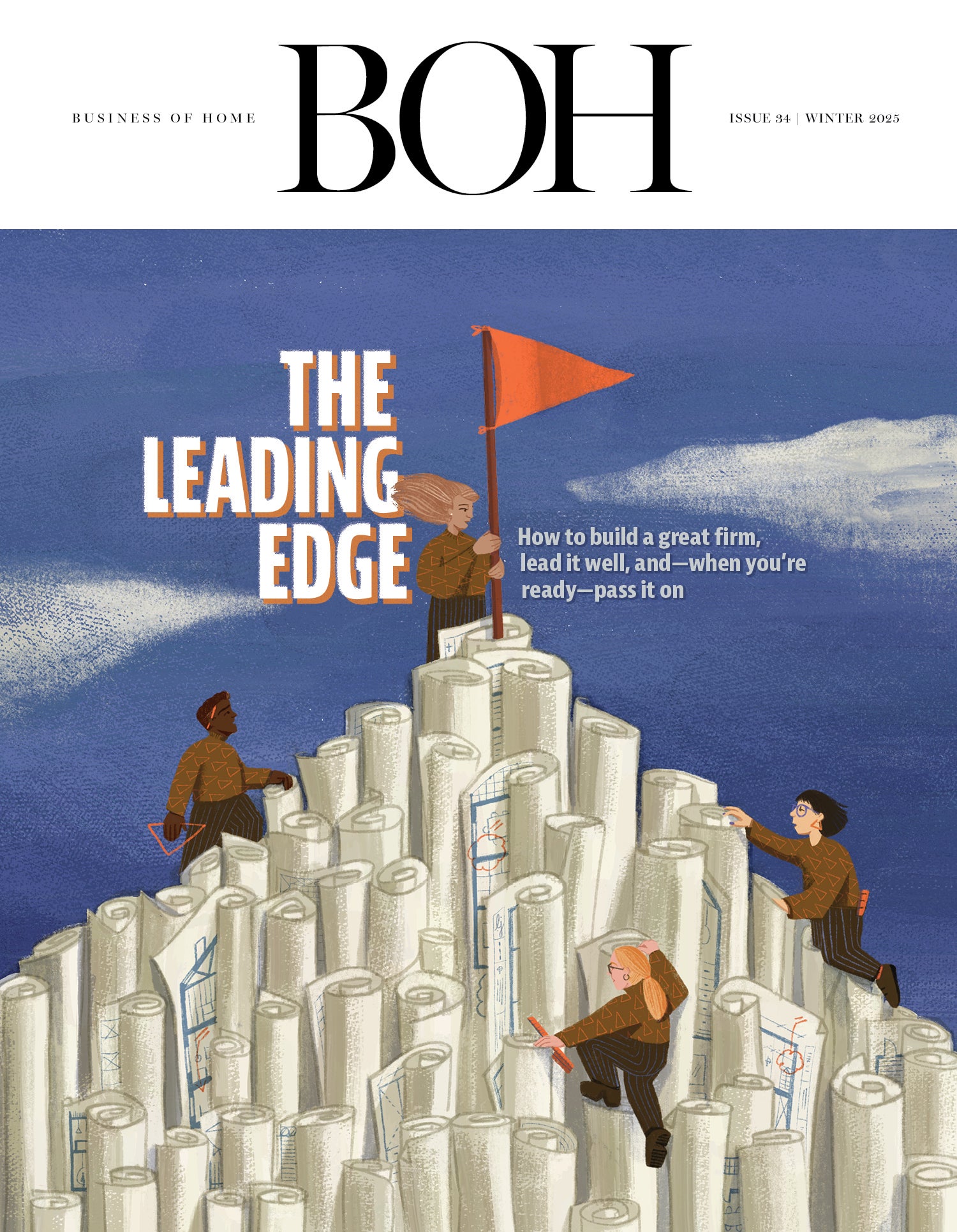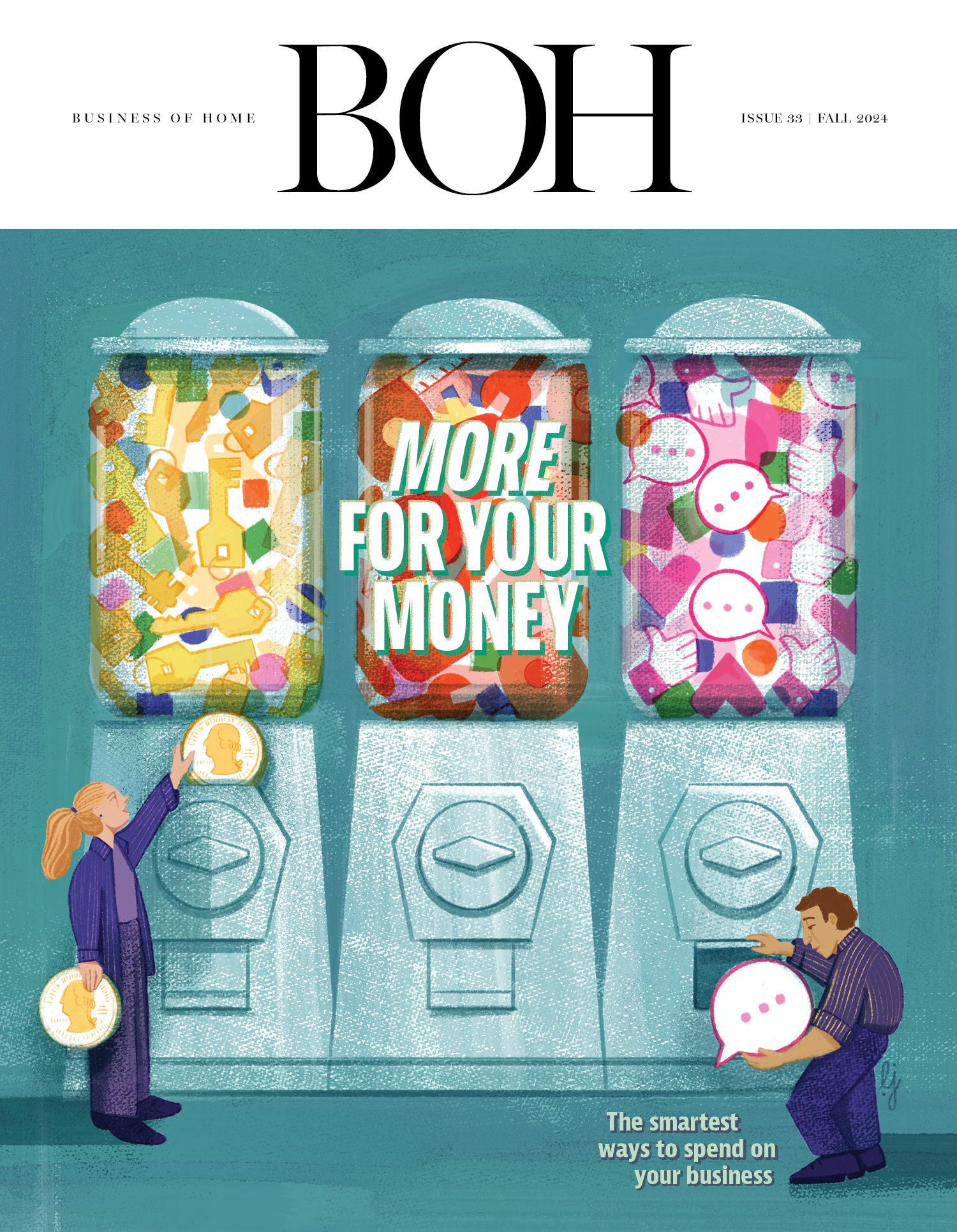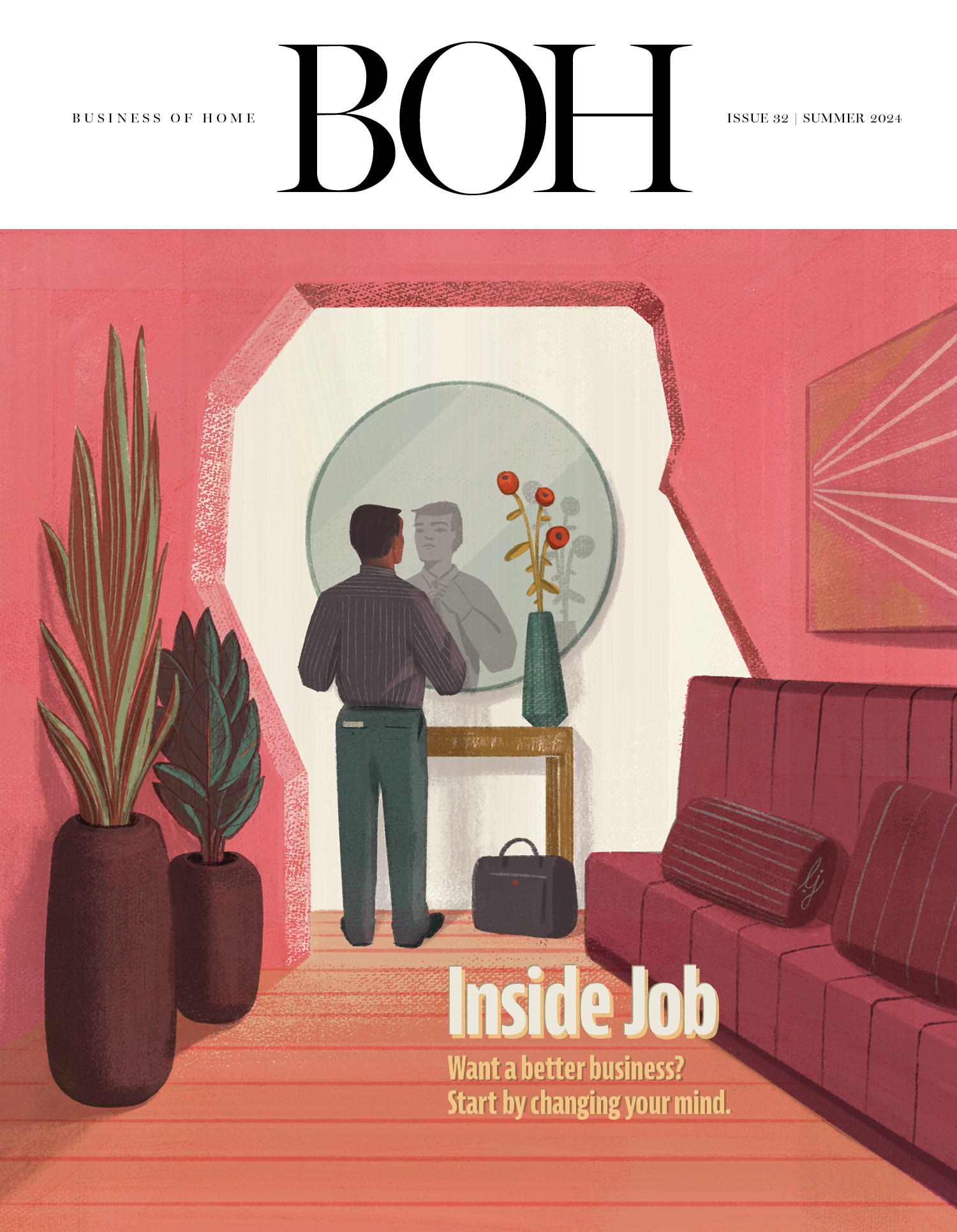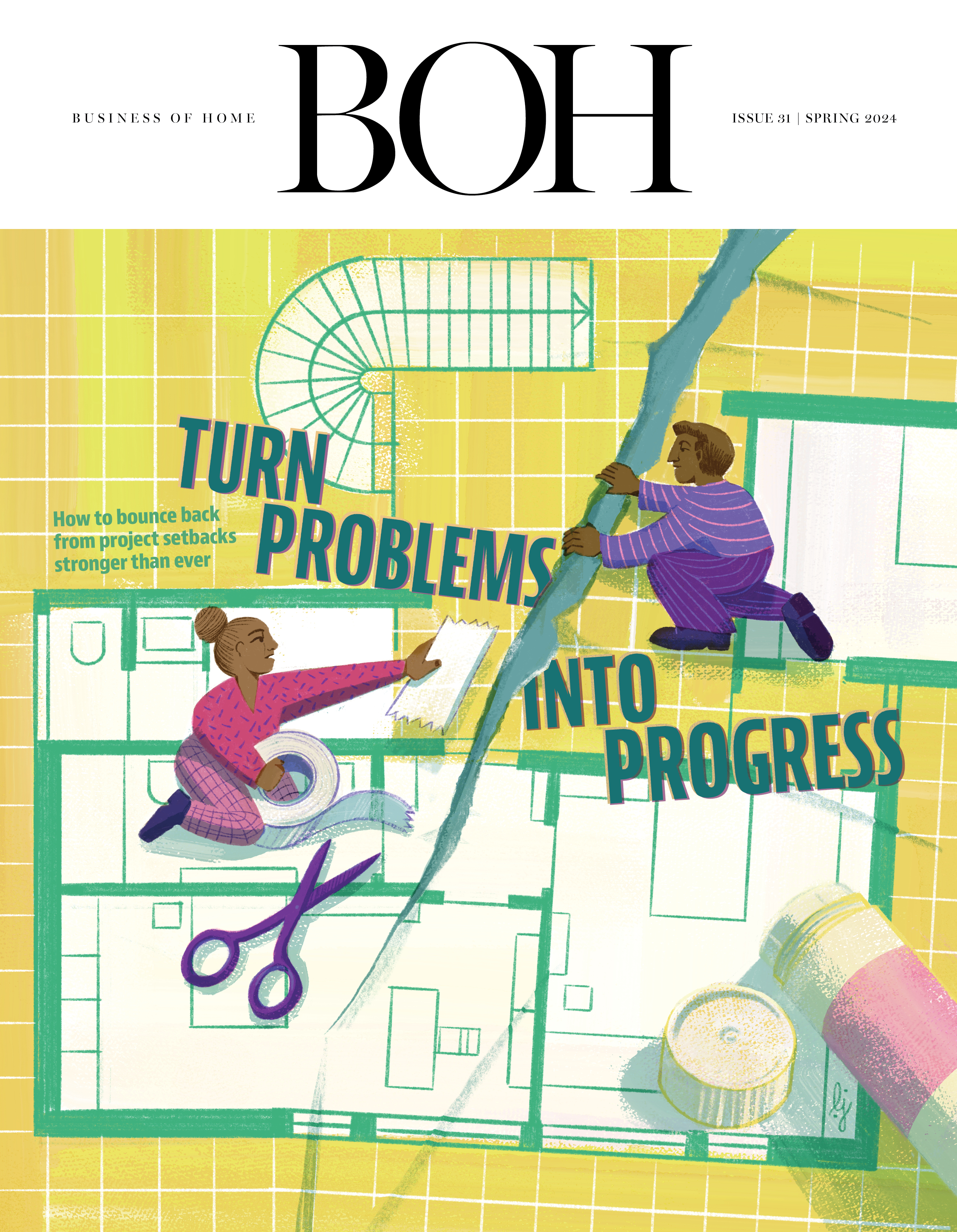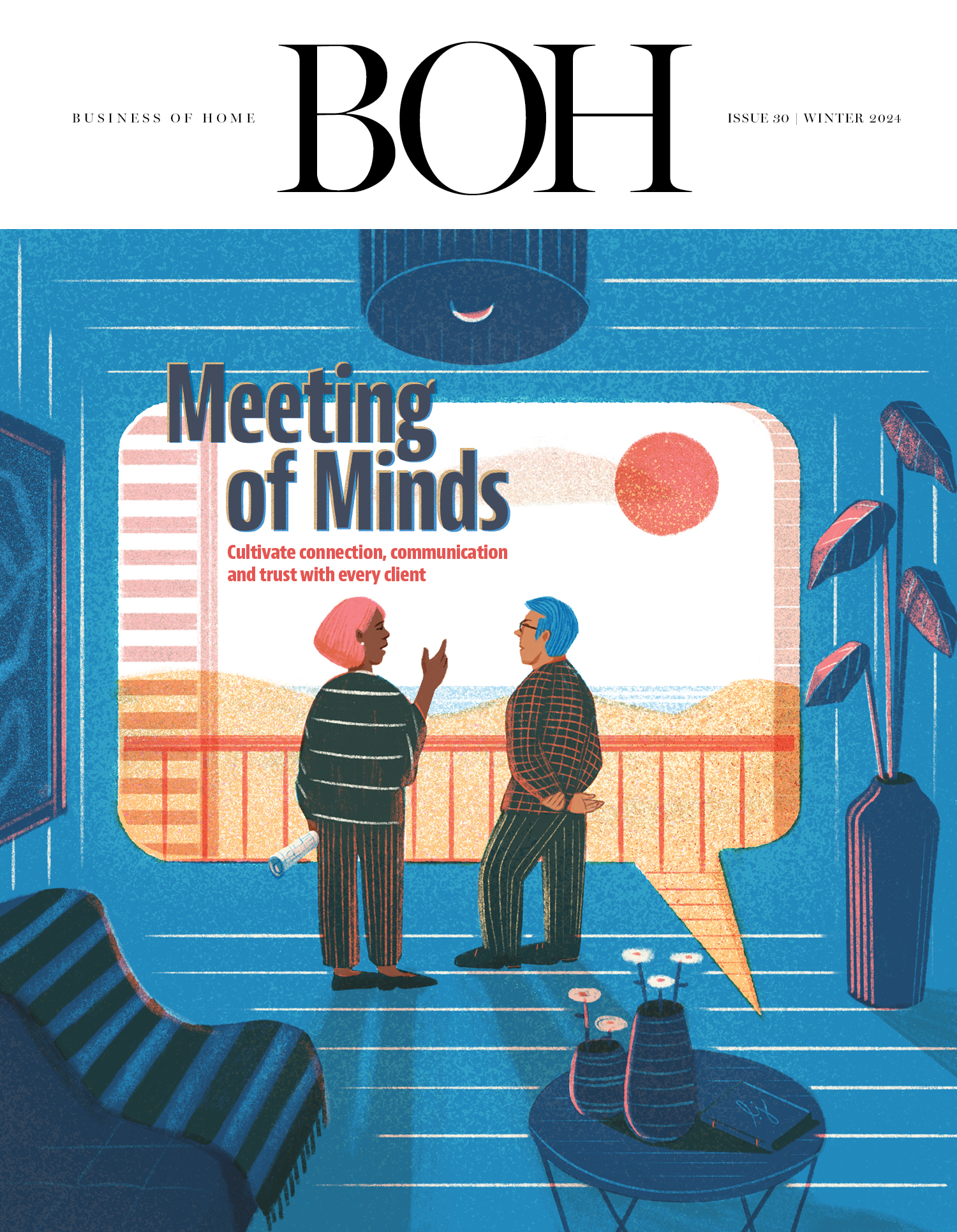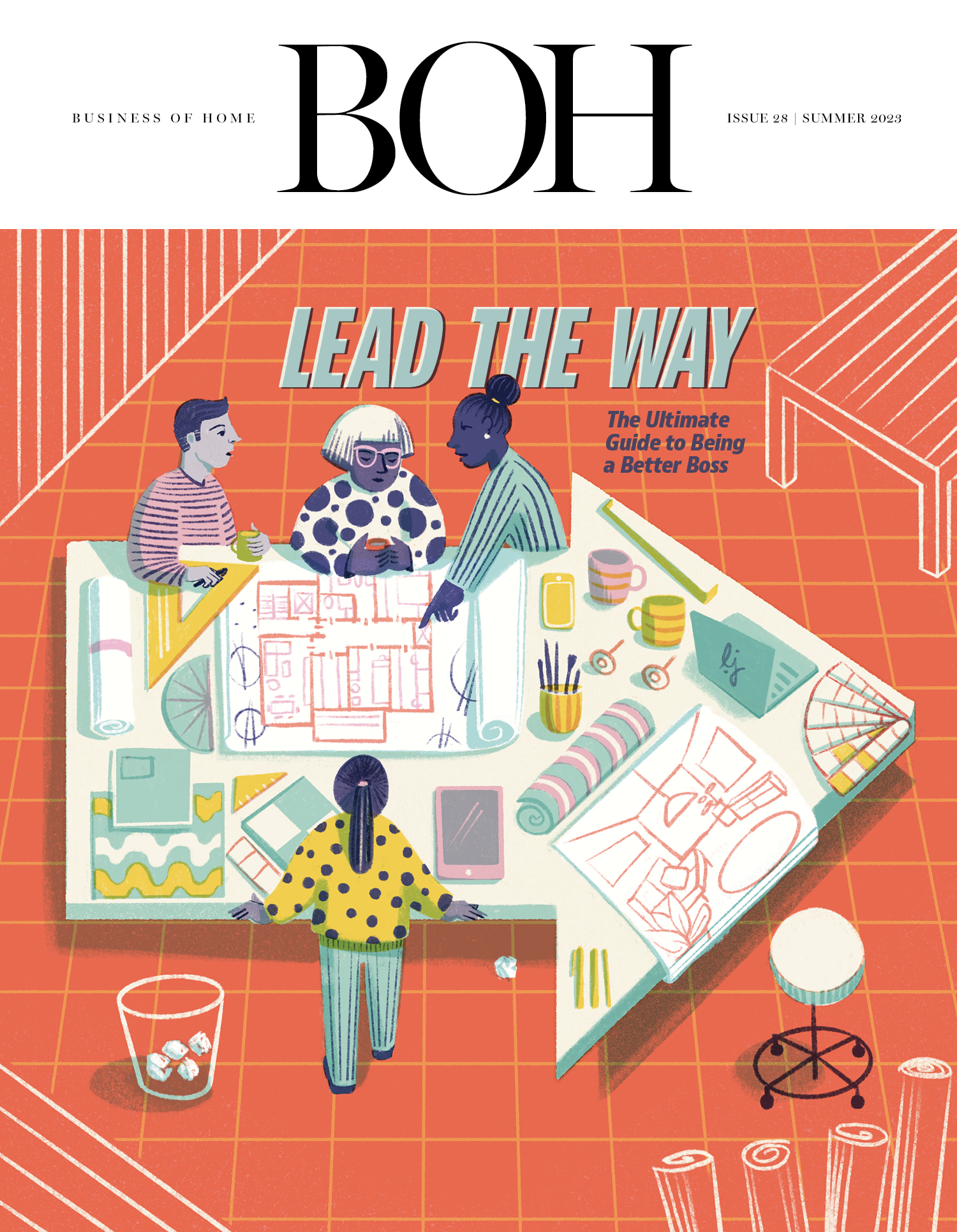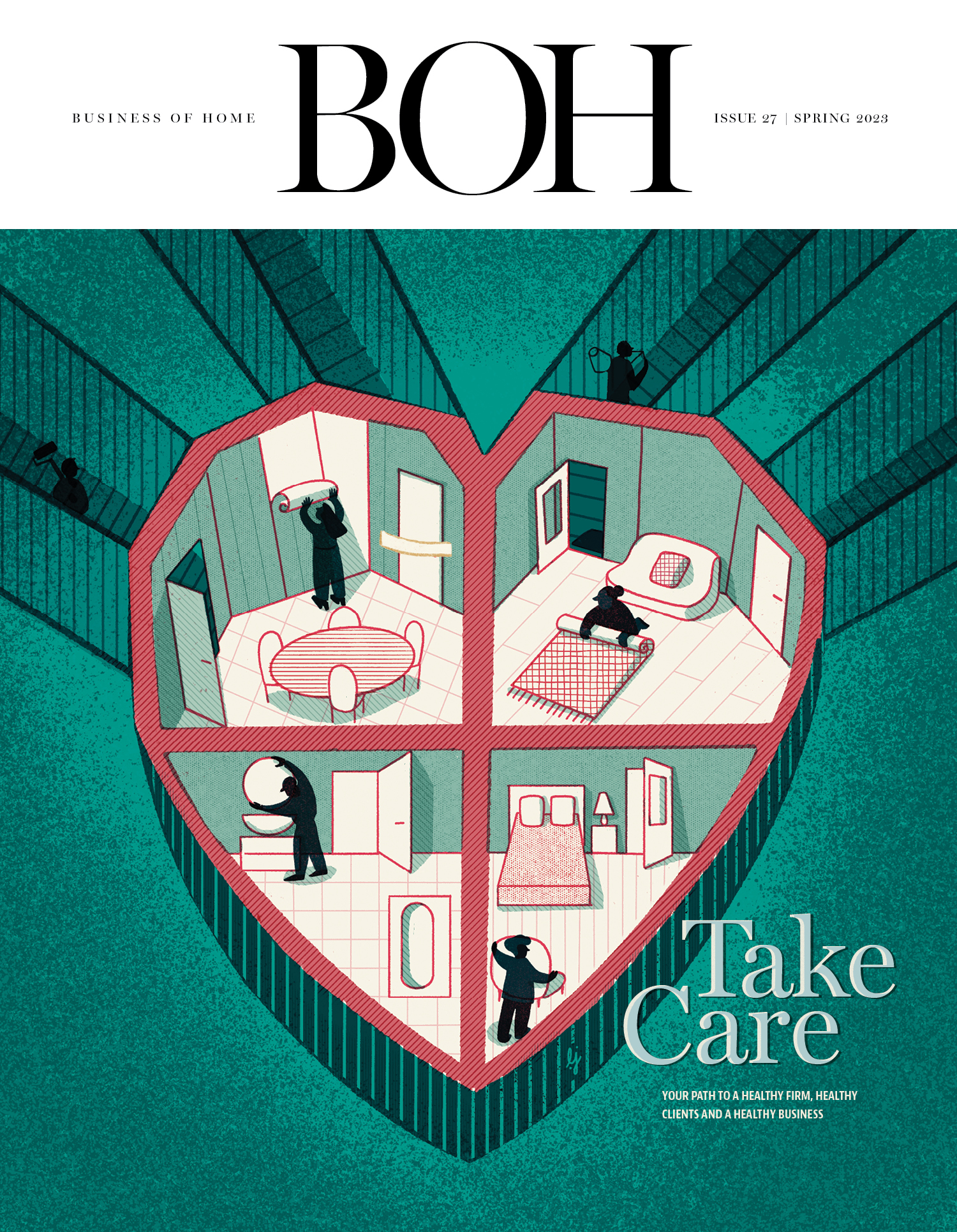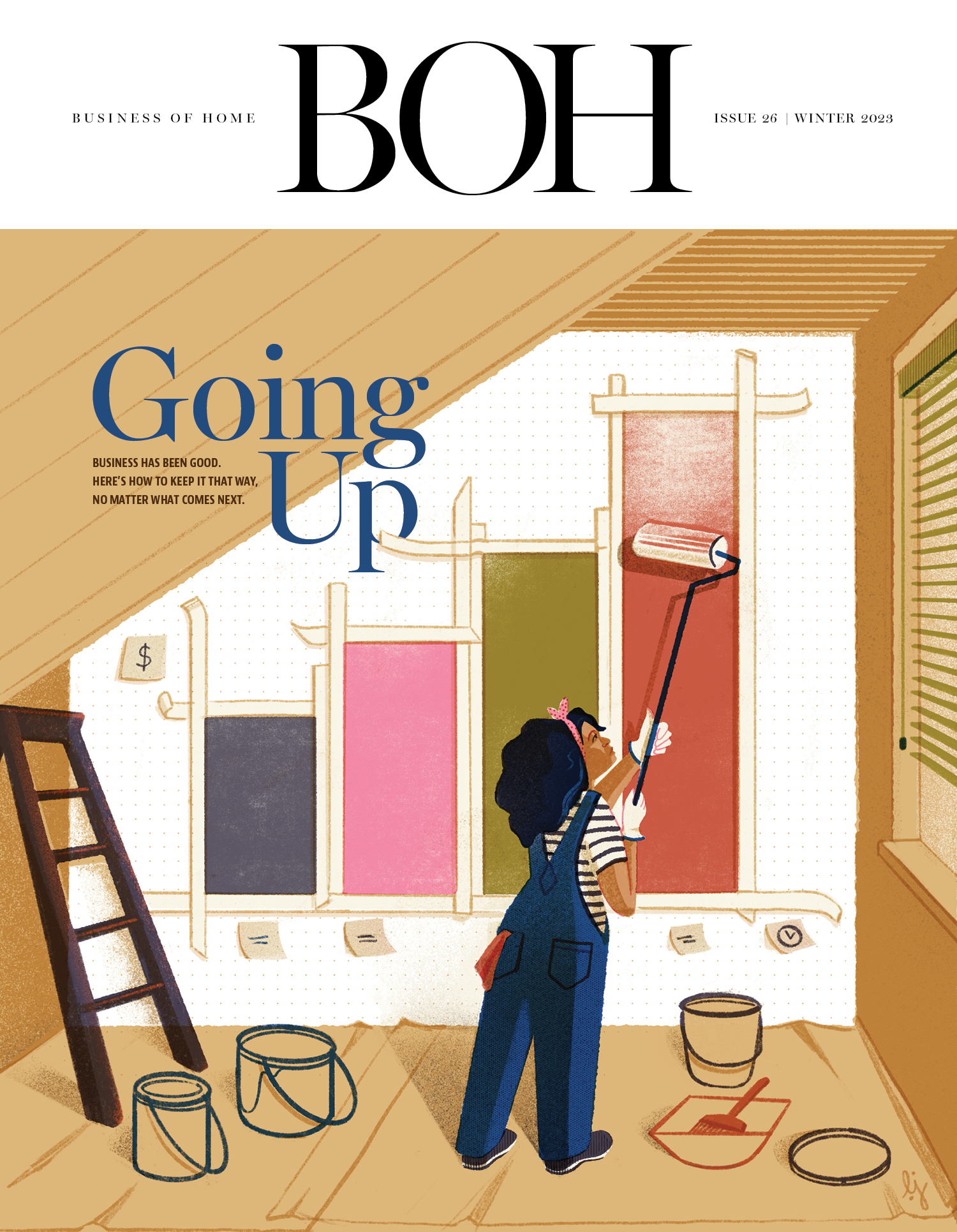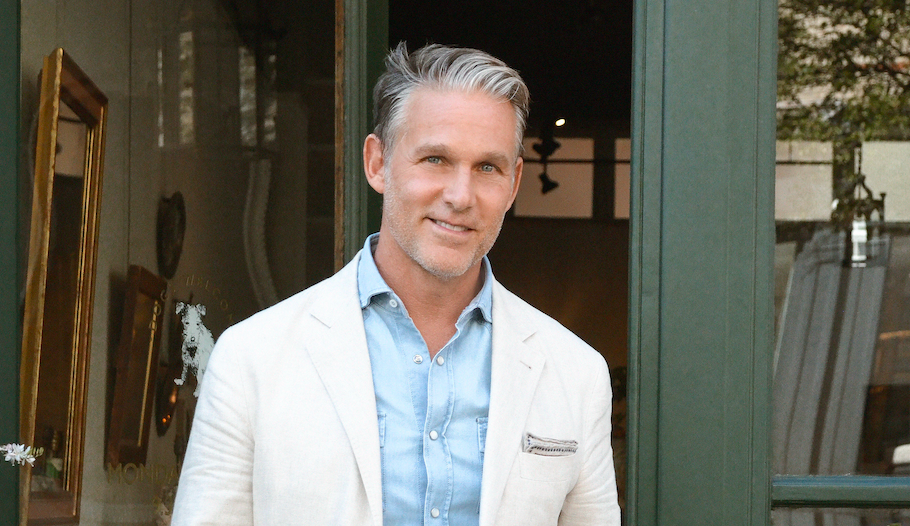After failing to find the educational experience he craved at design schools in America, a young, California-bred Jeffrey Alan Marks moved across the pond to study in London, and financed the endeavor in an atypical way—modeling. He landed gigs for Paul Smith and the retail store Marks & Spencer before eventually pivoting to design jobs for Colefax & Fowler and designers John Stefanidis and Christine Kennedy. “That really helped me ground my eye on the world, to know that there was more to life than American design,” he tells host Dennis Scully on the latest episode of The Business of Home Podcast.
When Marks moved back to California a few years later to launch his own firm, he struggled to find his design identity. “How do I take this beach life and my English training, which is more European and a little bit more formal, and mix it together? My early years of design, I was sort of fumbling a bit at who I was,” he says. “I think it takes a young designer some time to figure out who they actually are [and] what they stand for without just looking at what someone else is doing.”
The designer ultimately found his footing—he credits designing his personal homes with helping him get there—and found great success, taking on big-budget projects across the globe. Starring in Bravo’s Million Dollar Decorators, which debuted in 2011, further cemented his industry status and sparked product collaborations with brands like Kravet, Palecek and A. Rudin.
Throughout his career, Marks has found that his own properties are the projects that get the most traction. Despite working on five to six client new builds at the same time and consistently publishing his work, what really caught people’s attention, especially at the outset of his career, were his Rancho Santa Fe cottage and his Santa Monica home. “People wanted to see my own house, and they loved seeing how I did it on a budget but also mixed the high-low. You’re definitely more creative, and that’s what people really gravitated toward [in the] early years of my own work—more than the 12,000-square-foot beach house on the cliff of Laguna,” he says. “That was an interesting thing for me to learn, because I’m like, ‘Why aren’t you wanting to put this in Architectural Digest or Elle Decor? Why are you wanting to put my little beach house in?’ … [My home] was more original. It was more layered. It definitely said more about me as a designer and less about trying to make money.”
Crucial insight: Marks knew from the start of his career that he would want to run his own business one day. From his early designer mentors who had their names on the door, he quickly learned how all-encompassing that position is. “When I saw them getting in early before their employees and sweeping the pathway to the front door, cleaning the windows, I learned early on that you have to do everything,” he says. “You can’t just be the head of this firm. You have to make sure that the people that are working for you are happy, and there’s so much that [makes it] a hands-on job. If it’s 9 o’clock, I’m getting my [employees] coffee, and at 4 o’clock, I’m pouring them wine.”
Key quote: “I didn’t realize the patience level [required to do this job] was going to be so hard. You don’t realize how long it takes to make this house actually work. You are conceiving this beautiful house, room, apartment. And I’m not talking about patience with [clients]. I’m talking about patience with workmen and how the production happens on a day-to-day basis, and how the project manager makes that happen—it’s everyone working together, and that takes a tremendous amount of patience. To be honest, I couldn’t have said that at 35 years old—I was not that guy. I was a worker. I worked, worked, worked, and now I’m in a more relaxing phase of my life where I can do the work I want to do, do it well, but also have family time.”
This episode is sponsored by Ernesta and Crypton. Listen to the show below. If you like what you hear, subscribe on Apple Podcasts or Spotify.
The Thursday Show
Host Dennis Scully and BOH executive editor Fred Nicolaus discuss the biggest news in the design world, including tariff price hikes, a New York design show debuting this spring, and why butter yellow is on the rise. Later, New Yorker staff writer Kyle Chayka joins the show to discuss his book Filterworld—an examination of how algorithmically powered social media has flattened taste.
This episode is sponsored by Jaipur Living. If you like what you hear, subscribe on Apple Podcasts or Spotify.




